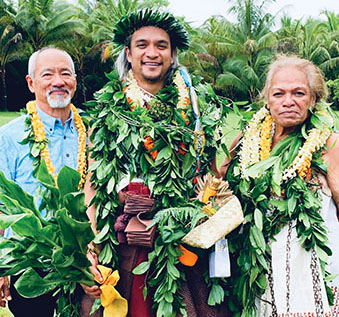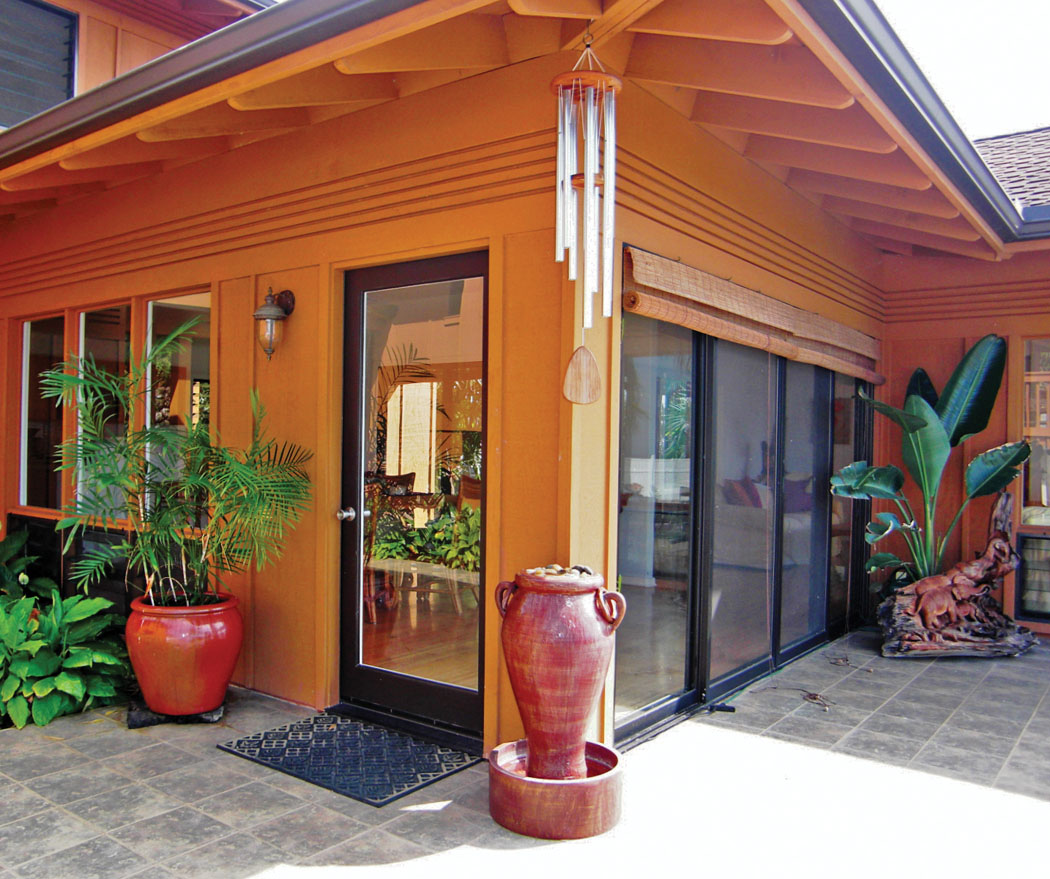Hula Instruments: The Rhythm of the Dance
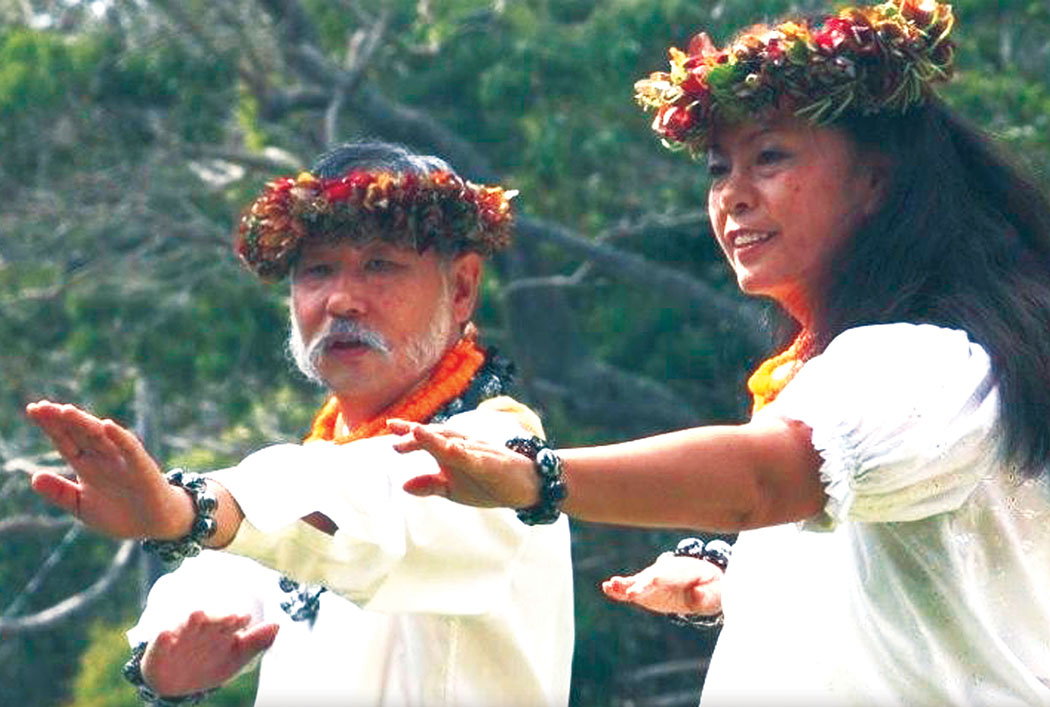 By Denise Laitinen
By Denise Laitinen
“I le‘a ka hula i ka ho‘opa‘a”—the hula is pleasing because of the drummer. The well-known quote from Mary Pukui’s seminal book, ‘Ōlelo No‘eau, means that although the attention is given to the dancer, the drummer and chanter play an important role in the dance.
The drum is just one of several instruments in hula, although some would say it is the most important.
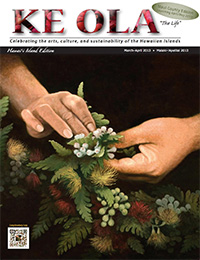
The pahu, or hula drum, is the primary instrument of the kumu hula (hula teacher) and considered sacred. The beat of the pahu guides the dancers, dictating the pace of the dance with the rhythm of the drum.
In the past, pahu drums were made of breadfruit trees, although these days coconut wood is more commonly used. The drums range from one to four feet in height.
“The covering for the pahu drum is usually made with the skin of a shark, but these days because it is very difficult to get shark skin, people use cow hide,” explains Ab Kawainohoikala‘i Valencia, kumu hula for Hālau Hula Kalehuaki‘eki‘eika‘iu (the majestic lehua blossom in the heights).
“Part of the training of becoming a kumu hula includes making oneʻs own pahu hula,” adds Valencia.
“The kumu’s training includes making all of his or her own hula instruments, but the hula pahu is the most important,” says Valencia who became a kumu hula in 1991 on O‘ahu and started his own hālau in 1996 in Honolulu.
After moving to the Volcano area in 2004, he created a Kīlauea chapter of the hālau in 2007. He oversaw both hālau, traveling between Hawai‘i Island and O‘ahu he retired the Honolulu hālau in December 2012.
Valencia and his dancers make all the instruments they use when performing.

Another drum used in hula is the small, lightweight kilu, also known as a pūniu, which is made out of a half coconut and covered with animal skin—usually that of the kala fish. The drum usually accompanies the pahu. Dancers strap it to their thigh and play it during the hula.
One of the most commonly seen instruments at hula performances, such as the Merrie Monarch Festival held every year in Hilo, is the ipu, or gourd. Kumu hula often use ipu, usually an ipu heke (double gourd) as a percussion instrument to create rhythm and sound for the chant and dancers.
Ipu heke are made by taking two gourds of different sizes, cutting them off at the necks and joining them so that the smaller gourd is on top. A hole is cut in the top gourd to allow the sound to escape.
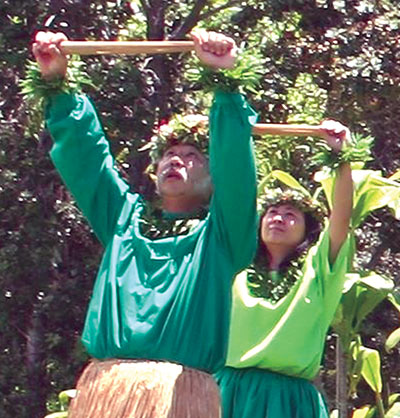
Ipu heke ‘ole–a single gourd cut off at the neck–is sometimes used by hula dancers during a dance.
“We get the gourds and dig them out, cutting them and gluing them both together to make the ipu heke,” explains Valencia.
Although gourds used to be grown across the state, invasive insects are making it more difficult to grow gourds in Hawai‘i. These days, it’s not unusual for hālau to order gourds grown in California and the southwest.
Valencia says his hālau typically order gourds from a hula supply store on O‘ahu. “As a kumu hula you have those sources,” says Valencia. “And in turn those sources came from my kumu hula because she would tell use where to go.”
While the gourds will last for years, they must be used with care.
Ho‘opa‘a, chanters using an ipu heke, do not strike the ipu on the ground. Rather, they use a protective pad called a pale, usually woven from lauhala or made of tapa.
Chanters and drummers need to strike the gourd in a certain manner to prevent it from breaking. “Never strike the piko—the center of the bottom of the gourd,” explains Valencia. “Always strike on the side of the ipu. If the ipu lands on the rim, and not straight down, you will break it.”
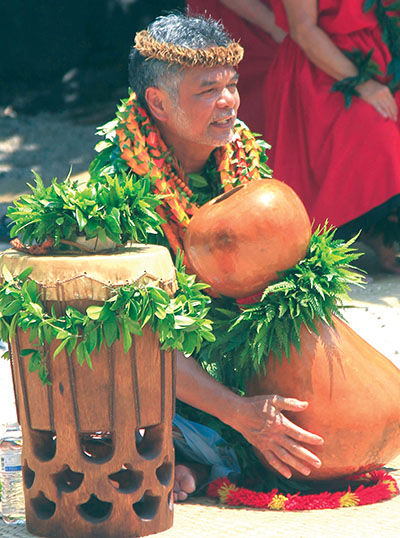
Other instruments used in hula include the ‘ulī‘ulī, or rattle gourd. Made from la‘mia gourds, the rattles contain small dark round seeds, usually ali‘ipoe or canna seeds. ‘Ulī‘ulī usually have a woven handle and feature feathers at the top.
Not to be confused with the ‘ulī‘ulī are ‘ili‘ili, stones used by dancers in a staccato rhythm during a dance. The dancer holds the water-worn lava stones in each hand, striking them together like castanets.
Valencia says his hālau gather the stones ocean side at mountain streams where the water has worn the stones smooth.
As in plant gathering, there are protocols to be followed when collecting the stones.
“We ask permission and chant when gathering any stones or other materials,” says Valencia.
The same is true when harvesting bamboo, which we use to make dancing sticks called pū‘ili. Not just any bamboo either will do when making pū‘ili, which are 20 inches in length, and about 1.5 inches in diameter.
“We need Hawaiian bamboo because they have long nodes,” says Valencia. “We can’t use introduced bamboos because they have short nodes. So we have to make sure it is Hawaiian bamboo.”
According to Valencia, the bamboo sticks are picked when green and dried for about a month. Sanded and finished, several slits are cut into the sides of the bamboo with slivers between the strands removed to give it its unique rustling sound.
Pū‘ili are not to be confused with kāla‘au, wooden rhythm sticks used in pairs by dancers. In years past, pū‘ili were made of hardwood, such as hau, milo, kauila, or sometimes in koa. Today, they are also made of pine and guava.
There are two different type of kāla‘au: shorter sticks 12-14 inches long, and a longer version in which a stick 6 inches taller than the dancer is held in the left hand and shorter stick 14 inches long is held in the right hand.
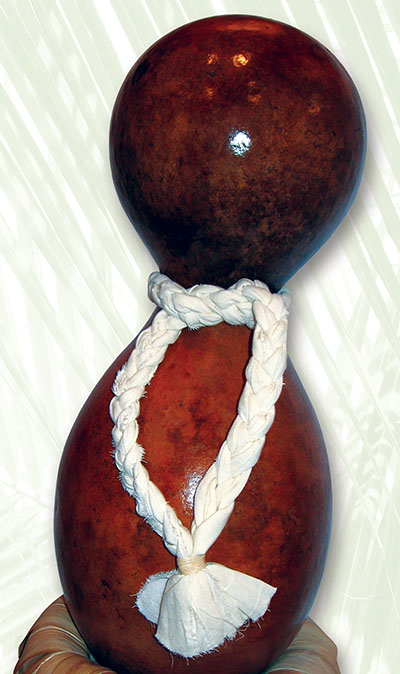
The kāla‘au are hit against each other in a back and forth motion to create a sound. Depending on the hula, performers use the kāla‘au by holding one in each hand and striking them together in the shape of an “X.”
Another wooden instrument is the papa hehi, a footboard or treadle. The papa hehi is comprised of a board and a crosspiece. Used to keep time, the papa hehi is used with the kāla‘au.
As can be imagined, it requires a great deal of concentration and coordination to dance, chant, and play an instrument during a hula. Some are more complicated than others. For instance it takes a great deal of skill to play the papa hehi with one’s left or right foot while your hands are simultaneously using the kāla‘au sticks, sometimes in a different rhythm pattern.
While hula dancers take great care of their instruments, usually keeping them in protective cloth cases, the instruments are made of natural materials and are subject to wear and tear.
“For us, hula instruments are not permanent instruments,” says Valencia. “The only instruments that are permanent are the ‘ili‘ili because they are made out of pōhaku (stone). You can break your ‘ulī‘ulī. You can break your ipu. It happens.”
Although he says they have had instances where they have repaired an instrument, Valencia says that he prefers that hālau members go ahead and make a new instrument.
However, broken hula instruments are not discarded in the trash or treated carelessly. Being made of nature, they are returned to the natural environment.
“There are two ways of dealing with a broken instrument: returning it to the garden or burning it.” ❖
Photo Credit: Hālau Hula Kalehuaki‘eki‘eika‘iu
Contact writer Denise Laitinen: wahineokekai@yahoo.com

